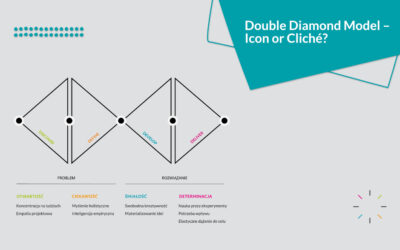“Design is something that people do. Animals don’t do it, and machines (so far) don’t do it. The ability to design is part of human intelligence, and this ability is natural and common among the human population.” – These words were written by Nigel Cross, a design researcher and experienced educator, in the early 1990s. Now retired, Cross is a former professor at the UK’s Open University and the editor-in-chief of Design Studies. Through his work, Cross had a crucial impact on explaining and developing the concept of design thinking, focusing on understanding the nature of the ability to design.
Contents
- Analysis of Design Methods: The Birth of the Design Mindset Concept
- The Evolution of Design Responsibility in the Context of Industrialization
- The Impact of Design Thinking on Organizational Culture and Sustainable Development
- Design Thinking: Balancing Innovation and Responsibility
Analysis of Design Methods: The Birth of the Design Mindset Concept
Many years ago, Nigel Cross paid special attention to the unique work methods used by designers. He analyzed the techniques that allowed them to achieve specific goals. Cross noted that designers often conduct interviews with users (both current and potential), observe their behaviors, and use both existing and self-created solution models that do not yet exist. In his work, he also focused on structuring design problems, going beyond the standard process of information gathering, thinking through sketches and actions, and formulating the design problem in a way that leads to creating innovative solutions. These elements of design work have been widely described by many researchers over the past 50 years.
This wealth of knowledge became the foundation for me and Weronika Rochacka Gagliardi, on which we based the description of a set of characteristics typical of the thinking and actions of designers, termed the Design Mindset. We identified and described nine such traits within four areas: openness, curiosity, boldness, and determination. Example predispositions of the Design Mindset that we highlighted include design empathy, holistic thinking, empirical intelligence, and the need for impact.
The Evolution of Design Responsibility in the Context of Industrialization
At the end of the 20th century, the intensification of industrialization met with numerous critical voices. This criticism also concerned the use by advertisers of research on consumer motivations and the techniques and psychological effects used, such as depth psychology or subliminal perception. Vance Packard, in his book “The Hidden Persuaders” (1957), described manipulations aimed at shaping expectations and stimulating the desire to purchase products. At the same time, the most resonant voice in design circles was Victor Papanek. His book “Design for the Real World” (1971) became mandatory reading for subsequent generations of designers, shaping their awareness of responsibility for society and the natural environment. Concepts related to sustainable development have become an integral part of design education worldwide over the past several decades.
The Impact of Design Thinking on Organizational Culture and Sustainable Development
The ability to create solutions that meet human needs, combined with a deep awareness of the impact of new products and services on society and the environment, is a hallmark of designers. These factors have invaluable potential to shape organizational culture.
When design thinking, also known as Design Thinking, began to permeate the business world, it provided access to a range of tools from the design world. This facilitated smooth collaboration between professional designers and other experts involved in design processes. Nowadays, when the pace of climate change is accelerating and global corporations are implementing ESG (Environmental, Social, and Governance) policies, designers are becoming a driving force for significant changes within many organizations. The unique abilities of designers to create solutions based on human needs, as well as their deep awareness of the impact of design on society and the environment in the short and long term, have enormous potential to influence organizational culture.
Design Thinking: Balancing Innovation and Responsibility
The thinking and actions of designers have been thoroughly studied and described. On the other hand, there is an inevitable responsibility to society and our planet. In my opinion, one of the most fascinating and still rarely discussed aspects of the Design Mindset is the “need for impact.” Designers, when facing design problems, show a strong commitment to making changes and convincing others of their idea. This may seem idealistic and somewhat unrealistic approach to work, but let us not be mistaken – designers are able to turn their ideas into concrete actions.
Also read: Possible development directions for service designers





